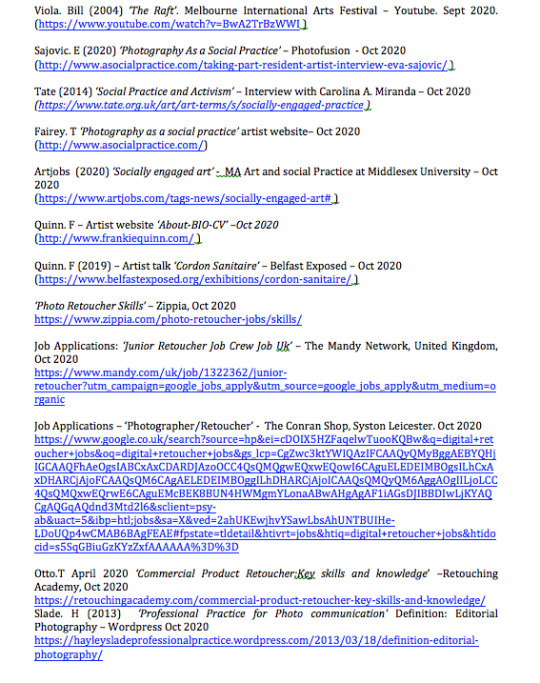Text
Career Research - Curator

As a result of our lecture the other day based around working as an artist, we touched on the role of a curator. This is something that i’ve taken an interest in within the past couple of years. To be honest, it was a job that I never thought much about, but as we’ve talked more about it, and as I’ve been visiting more museums and galleries throughout my time at university, it’s something that I could see myself doing some day.
After doing some research, I found out that curators are responsible assembling, cataloguing, managing and presenting artistic and cultural collections. They’re the individuals who are behind organising exhibitions and shows in museums and galleries. This involved researching trends and working out the logistics for potential exhibitions.
I think it’s important to for me to strive for a job that allows me to be comfortable in the working environment, and it just so happens that I really enjoy the spaces within museums and galleries. There’s something I really love about that space - maybe it’s the peace and tranquility.
Although i’m certain the role of a curator is a busy one, it would also be a very rewarding career that would allow me to network with other people and create useful contacts within the creative industry. Although my passion is for documentary photography, I’m also enthusiastic for art and history; they have just as much right to be in a museum or gallery as well.
Being a curator would allow me to continue with my passion for photography as well as incorporating my creative skills in other areas of interest. I would enjoy conducting the research as well as trying to figure out ways to arrange the work in a way that best targets the audience.
I remember Deirdre Robb the other week on the career panel telling us what are the three most important aspects of being a curator. They included knowledge, relationships and administration. I think I’ll try and reach out to Belfast Exposed in the new year and help as a volunteer. This would allow me to be within this environment and learn from others, plus it would give me experience and something to put on my CV if I ever wanted to apply for a job as a curator.
As a result of my research, I’m going to forward Chloe Juno a few questions about her role as a creative consultant and curator. I follow Chloe on Instagram and over the last couple of years, we’ve come to know each other quite well. She is in charge of the online collective known as ‘Documenting Britain’, and is involved in curating work for them as well as individual artists and photographers. Reaching out to her will provide me with some insight into her practice.
0 notes
Text
Working as an Artist.
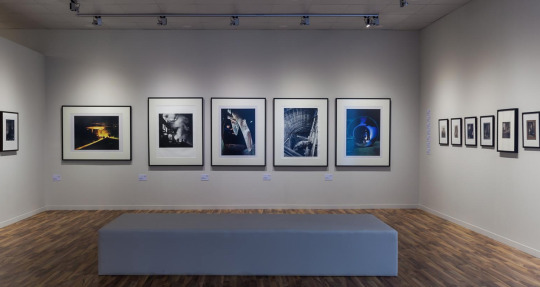
Todays career lecture was based around working as an artist. This is an area that i’m definitely interested in, however I’d be more inclined to engage with this practice whilst having another job, instead of relying on this as my career.
I found it really useful whenever we talked through some of the key areas that are important to think about if wanting to enter this practice. Some of these included different ways of getting my work out into the public arena, selling my work through galleries, how to approach commissions and what are the best ways to present my work. These are all really important for any creative, even if being an artist isn’t their career.
Exhibitions are a key platform for many artists. It allows them to show their work, sell their work and build up their contacts, which enables them to network with other creatives. I’m aware that exhibitions are very important due to the fact they can open up many new opportunities for the artist. Today we talked about some of the practical things I could do to provide me with the opportunity to have my own exhibition. They included:
Curate my own show - Edit down some of my own work and present it in a way that illustrates a story that could possibly be showcased in a gallery.
Attend portfolio reviews - When doing a bit of research into this, I found out that it’s generally when an organisation brings together photo editors, publishers, curators and gallerists and gives them the space to showcase some of their work. This would be great for getting my work out there and would enable me to make contacts. Haley said it would be good for people interested in documentary photography or photojournalism, so it’s definitely something I would like to do some day.
Residencies - This is when an artist stays in a particular place with the aim of creating work in that area. An example of this was when Antoine d’Agata took part in a two week residency for Belfast Exposed last year. His task was to create an exhibition exploring life in contemporary Belfast. He was given a particular area to work within and as a result created an interesting exhibition, entitled ‘Eleven Voices’, that explored the stories of eleven individuals in modern-day Belfast.
Collaborate as a collective - This is something that interests me. The thought of doing an exhibition on my own is rather daunting. I would prefer starting off by working with a group of people. This would mean I would end up having a group exhibition rather than a solo show.The effort is divided amongst the artists, which would be very useful if I was trying to create an exhibition alongside having another job.
All of the above information is really useful and I hope to make some movement on some of these areas in the new year. Other things to think about include commissions and how to present my work.
Commissions - This was also talked about today and it’s been something that I’ve thought about doing in the past. A commission is whenever a make a project that is funded by an organisation, company or individual. I think this would suit me as I enjoy having some sort of structure and trying to meet task deadline.
Presentation - This is key to an artists’ performance. How I present the work can depend on how many people want to come and see it or purchase it. I must think carefully about what type of paper I choose to print my work on, what type of mounts I use, what sort of frames I present the work in and also how the work is physically positioned in an gallery.
All of this information was very useful and as a result, I hope to strengthen my practice as a creative. I hope to take all this on board reach out to individuals and organisations in regards to getting my work seen.
0 notes
Text
Lets Talk Enterprise Workshop
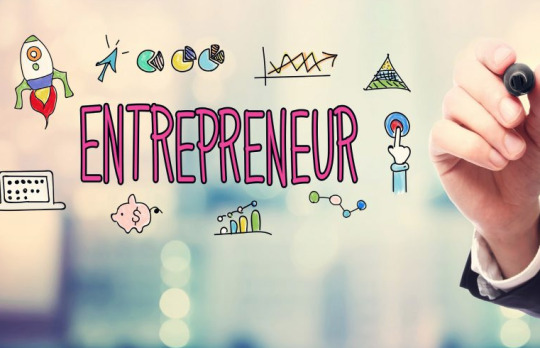
Todays workshop was with Helen Matthews, a business mentor. The talk was very useful in the sense that it was based around informing us about the different options in regards to enterprise. If i’m being honest, enterprise isn’t something I’ve thought much about in relation to future work, although after listening to todays talk, I’m more open to the idea.
She talked through some of the world factors that are changing and how these changes can be a positive for those wanting to engage with enterprise. Some key things to think about include:
Changing Demographics and social change - how will this change the way I approach who I advertise to?
Shift in global power - A change in leadership and policy can open up new opportunities for me.
Rapid urbanisation - More people choosing to live in a particular area. More people = wider audience = more opportunities.
Climate Change and resource scarity - Shortage of resources may be a challenge?
Technological Breakthroughs - The ability to use new technologies and platforms to enhance any ideas I may have.
Ageing Population - Improved economic wealth. More people willing to spend their money as they get older.
Helen made an interesting point today. She said that society is constantly changing and societal shifts are expected, however the important thing is to be able to see the opportunity in everything. I must always be willing to adapt, re-think and re-skill. This is what makes a successful entrepreneur.
Some tips that Helen talked about in regards to how to get noticed included:
Online presence - Make sure me or my business is easy to find. Don’t be afraid to constantly post. Use the power of social media to get my message out there.
Clear message - I would need to know who is my customers and what do they want/need. This is vital as it helps to inform my own practice. Make sure I build trust.
Contact Details - This is very important. It is one of the main paths that lead to opportunities. If my contact details aren’t visible, the viewer may get bored and give up.
I also learnt today that entrepreneurs come in different forms. They aren’t all like the traditional entrepreneurs. There are social entrepreneurs. These are people who starts up a business for a specific social purpose. The ‘Oi’ clothing brand is an example of this. A lot of the money they make goes straight to homeless people in Northern Ireland. Another form of entrepreneurship is known as ‘Intrapreneurship’. This is someone who acts like an entrepreneur within their own job. They use their entrepreneurship skills to contribute to their own role.
In conclusion, the talk today was really useful. I’m still not sure if this is something I’d like to enter into as a professional practice, but it’s always good to learn about it and use entrepreneurial skills in all walks of life (whether I’m employed or work for myself).
0 notes
Text
Freelance Photographer -career research.

Todays career session focussed on freelance work. Before the lecture started, I was somewhat apprehensive about becoming a freelancer as part of my practice. The lecture helped to confirm that this is something that’s probably not suited to me.
However it was still informative to learn about what’s expected if I were to enter this practice.I feel as though I’m suited to some of the qualities that were spoken about throughout the lecture. I do feel as though a have the ability to be adaptable and adjust to new situations and I’m quite good at managing my time, however I know don’t have great business skills. This is something I know I need to work on, because it isn’t only a skill that’s needed for freelance work.
Job security and sustainability is very important to me and after doing my own research into freelancing, I recognise that security doesn’t come with the job. There seems to be a lot of competition out there and because of this, it can be very hard to maintain work and sustain a reliable income. I think it’s important for me to have a balance. I want to enjoy my work but also have a sense of belonging and security, but i’m not sure this practice would provide me with this.
When looking online about how to become a freelancer, there are many tips and advice, but the main one seems to be about having an outstanding portfolio that instantly catches that attention of others. Another piece of advice was to develop my skills in mixed media. It’s is becoming more and more common for people looking photography and videography jobs, therefore it’s important to have some knowledge about both, as well as the editing platforms that accompany the mediums.
Other advice included making sure I have evidence on show of placements and internships in the practice. This shows that I have previously engaged with the practice and have some degree of experience in what I’m doing. It was interesting learning a bit more about freelancing, but as I said, I don’t think it’s for me.
0 notes
Text
Creative CVs Lecture.

In todays lecture, we talked about how to create an engaging CV that reflects my creative skills. Usually I dread the thought of creating a CV, however after todays talk, I actually feel more confident. I found it really useful whenever Dr Stella So went through each area and provided advice for what to write and ways to back up what I write with evidence.
Creative Cvs are slightly different than other CVs, in the sense that the main aim of it is to showcase my creative skills. I learnt today that the overall CV should be no longer than two pages. This is useful to know.
What Information to Include?
Clear evidence of creative ability - This is one of the most important parts of the CV. This may include any competitions I’ve entered or exhibitions that I’ve been involved in. It is also very important when I do provide these examples to make sure the content is correct and that I provide specific examples of these skills.
Relevant Headings
I also learnt today the importance of including relevant headings within my CV. Rather than a viewer feeling overwhelmed with a mountain of text, this helps to draw their attention to an aspect of myself that I want to highlight. For example, this could include:
Personal Details - My name, email, phone number, any links to online portfolios, websites or blogs.
Personal Profile - This is like a short bio (no longer than 5-6 lines). It is designed to be straightforward, positive, reflects my background story and highlights any future goals I may have.
Education - List all my education up to date and provide them with any qualifications I may have achieved. Stella told us to also list any modules that may be of interest to employers, such as visual narratives and video editing etc.
Work Experience - Include any work experience that I have done and may be relevant to the job i’m applying for.
Skills Profile - Stella said that it was important that I don’t just list off my skills. Make sure I back everything up with evidence.
Additional Achievements and interests - Anything else that doesn’t fall under the previous headings but is something that I want them to know about. For example, if I was involved in a publication, then I may want them to know about it. Make sure to include evidence and dates.
References - Two references. One academic and one work related.
Adjusting my CV to make it creative - Due to the fact a creative CV is slightly different than an ordinary CV, then it means I can include other headlines that may be relevant to my practice. Some of these include - Professional short courses that i’ve taken part in, commissions, freelance work or any experience in specific software that may be of interest. One of the main things that I took away from todays talk is the fact it’s about adjusting your CV to highlight my creative skills. I also learn that it’s helpful to enhance the visual elements. I need to make sure my CV is suited to my target audience and I shouldn’t be afraid ti include any photographs, drawings or paintings that reflect by skills.
0 notes
Text
Career Panel
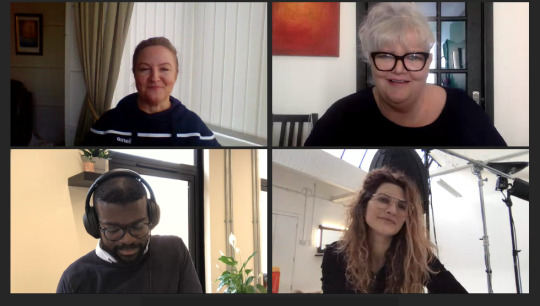
Todays career panel was really interesting. The five different panelists represented a broad range of photography practices that are currently being discussed each week in our professional practices module.
Davie Cairns - crime photography within the PSNI.
Davie’s department falls under the imaging branch of the PSNI. They record evidence in and around crime scenes, in a way that helps to illustrate the story of the crime. Their clients are ultimately the judges and jurys, who use the photographs to help inform them in regards to their decision making. Davie told us that there are five main areas within their department. These include, Crime scene surveyor, CCTV recovery, facial identification, post-mortems and arial photographers that capture evidence on large-scale crime scenes. Placements for students will be available. This is something I may look into!
Deirdre Robb - curatorial and public art administration.
I was keen to hear Deirdre because the curatorial practice is something that interests me. Deidre is the Chief Executive in Belfast Exposed. Every time I would go into Belfast Exposed to see an exhibition, Deirdre would be one of the ones that would be heavily involved in curating the artist’s work. She spoke to us today about three of the key areas that we would need to have experience in if we were to pursue her practice. She told us that we needed knowledge of the practice and advised us to shadow other people who work in this field. She also said that Belfast Exposed are hoping to run internship programmes next year, but volunteering is also a good way to gain experience. Relationships with people and relationships with the space you’re working in is also very important. Build trust with others. Administration was the last of three key areas she pointed out. It’s important to have some level of business and management skills.
Eyram Seneadza - marketing and design.
Eyram’s practice is based around marketing and design. He pointed out the importance of understanding clients. What I took away from Eyram is that, to be able to advertise anything to anyone, it is key to know who your audience is and what they want. This helps to inform his own practice. He talked about how Covid has forced him to increase his creativity and learning. One thing that I found interesting from his talk was that he said it sometimes pays to ignore the trends and move in other directions. This is often what makes you unique.
George Kingsnorth - film production.
George said that the perception of how difficult it is to get into the film industry isn’t always necessarily true. He gave us some advice - It’s important to be positive, make sure I know my equipment well and don’t be afraid to experiment with new equipment, stay creative and make sure to write down ideas in journals, be imaginative, upload my video work to Youtube and make sure to build up a strong portfolio of work that demonstrates why I want to work in a particular field.
Khara Pringle - fashion and editorial photography.
Although Khara’s main practice is fashion photography, I found it refreshing that she’s not restricted to this. She told us that she shoots pretty much anything. fashion, branding, food and product photography all fall under her practice. She said that her practice was really hit hard by Covid, but she pushed on and stayed creative. When her studio was pretty much out of action during lockdown, she said she photographed flowers in her kitchen using a torch. This has encouraged me to also pursue my goal whenever things don’t go my way.
Conclusion
Overall, I found this opportunity really useful for my own research. Not only was it insightful, but it allowed me to take on board some of the panelists’ approaches in regards to how to enter their field, sustain creativity, gain confidence and deal with the changing world of work.I’ve definitely taken a lot away from it.
0 notes
Text
Photo taken when I met with Frankie Quinn at Belfast Archive Project.
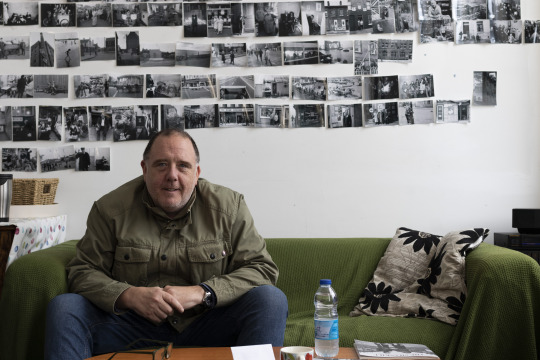
0 notes
Text
Presentation Planning.
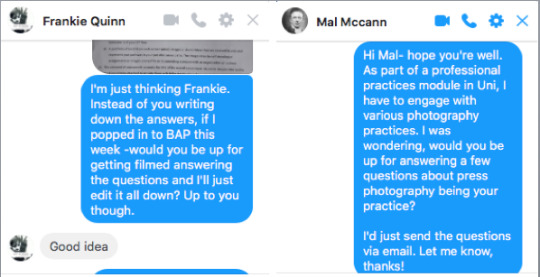
Evidence of Engagement.
Over the last few weeks, I’ve been starting to think about the practices that have been discussed in our lectures. Off the back of my research into photography as a social practice, I reached out to Frankie Quinn, a well known local photographer. Initially, I sent him a message asking him if he would respond to a few questions via email, however I then decided to ask him if he would be up for getting filmed giving his answers. I thought I would learn more if I met up with him in person. He agreed to it.
I met with Frankie on Thursday afternoon in the Belfast Archive Project office. I filmed him giving his answers to the questions.
The Questions.
1. How did you get into photography and how were you able to incorporate that passion into your working life?
2. What are some of the positive and negative aspects of photography being your social practice?
3. Is your practice heavily supported by funding? If so, how do you approach this?
4. What are some of the challenges in relation to funding?
5. How do you go about getting your work seen?
6. What would your advice be to anyone wanting to enter this field?
One thing that I will take away from the meeting is that if I was to get involved with photography as a social practice, then it’s incredibly important that I educate myself on the business side of this work.
Frankie Quinn told me some home truths about the practice. He said he has really struggled with money and funding over the years. Considering the uncertain times we’re living in, he wouldn’t advice any young person to enter this field at the moment. If sustainability is something I’m looking for, then I’m not sure that photography as a social practice will provide me with job security.
I’ve also recently sent Mal Mccann a message about possibly interviewing him in relation to his practice as a photojournalist for the Irish News. Last year Mal won the top prize at the Northern Ireland Press Photographer of the Year awards. His work really interests me and off the back of my editorial research, I thought he would be a good contact to use.
I had planned to interview him on camera as well, but circumstances have changed due to someone in my house contracting Covid-19. This means I will have to isolate for fourteen days. I’m going to just email Mal the questions and he has agreed to answer them. I plan to write the questions up this week.
0 notes
Text
Editorial Photographer - career research.
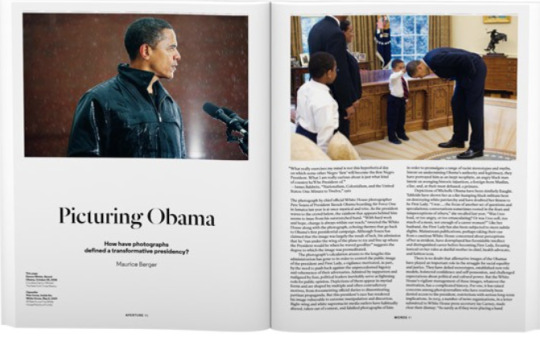
This is a photographic practice that has interested me for quite some time. I’ve always valued context alongside images. My enthusiasm for documentary photography and photojournalism backs this up. For me personally, documentary photography without the accompaniment of text doesn’t have the same effect. The storytelling aspect of editorial photography is something that I’m really drawn to.
Yesterdays lecture has helped to clarify my interests. I was told that if I entered the field of editorial photography, I may be expected to use my skills to help sell products, help illustrate a story, document something for marketing purposes or visually illustrate something for a book or social media. These are all tasks I think I would enjoy.
After doing some research into editorial photography careers, I‘ve learnt that there are many different avenues I could enter. The term ‘Editorial photographer’ refers to a broad grouping of photographers who work in many different industries. For example a fashion photographer, product photographer and photojournalist all come under the umbrella of editorial photography if their images are used to further a written message.
I think the avenue that I’m most interested in is photojournalism. I’m a ‘news junkie’ so this is probably the reason why. I love the idea of covering unfolding social and political events for the likes of a news agency or magazine. After researching this, I’m very aware that the market for this type of job is very competitive. If I wanted to get into photojournalism jobs, then I’m aware that I need to make sure I continue to develop my skills. This will help me stand out form the crowd and make me more appealing to editors and media companies. Off the back of this, I’m going to try and really master by video skills. I know this is something I need to work on.
I remember talking to Mal McCann, the Irish News photographer, about how competitive the industry is. He told me that staff jobs for papers are very rare in todays society. I hope to email him some more questions regarding his experiences in editorial photography.
If this is the case, then realistically I would maybe have to work as a freelancer. This has its positives and negatives, however I’m not sure if I’d want to work by myself. Job security is important to me and I know I want to be working in an industry that’s sustainable. Off the back of this research, I hope to continue looking into editorial roles, speak to Mal McCann and further my video skills to help make me more employable.
0 notes
Text
Digital Retoucher - career research
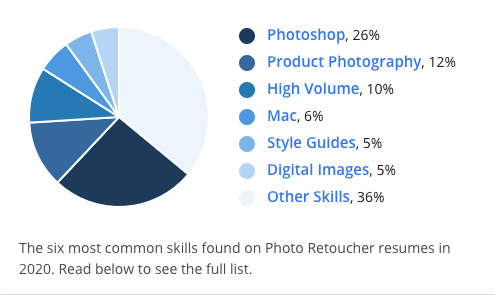
At the very start of todays lecture, I wasn’t too sure weather or not I’d be interested in the career paths that were being discussed. Haley talked through the roles of a digital retoucher, printer and people who work within VR.Off the back of her lecture, it has helped to confirm my lack of enthusiasm for the roles. Although I recognise that all of the above jobs are important, I feel as though they don’t suit me personally. I’m going to pick the one that I think would least suit me and explain the reasons why.
Digital Retoucher
When doing some research into the skills and qualities that are needed to be a digital retoucher, I came across the above image on the Zippa careers site. The information provided on the site was quite helpful. It explained each of the seven skill-based areas that a digital retoucher would be required to have some area of knowledge in. Some of these include:
Organise and maintained library collections of client photographs through Adobe Photoshop software.
Work on various projects ranging from Logo Design, Business Stationery, and Promotional Material using Adobe Photoshop/Illustrator.
Work under tight deadlines and with a high volume of images.
Scan negatives and chromes on Imacon Drum Scanner for clients, as well as, spotted & colour corrected the images.
Although I’ve a passion for photography, I don’t consider myself as someone who has advanced skills in technology in general. Photoshop is a huge platform. There’s so much you can do, but for my own work, I find myself using a very small element of the software. The Zippa site also suggested that applicants should have advanced experience in other software, such as Lightroom, Illustrator and Indesign. Sometimes I find Photoshop confusing enough nevermind being confident in lots of other programmes.I’d also be afraid that becoming a digital retoucher may kill my own passion for photography.
I feel like there’s a lot of technological pressure involved in the role of a digital retoucher. I don’t think this would suit me. Off the back of Cathy’s lecture regards problem solving, I often get easily stressed out whenever I encounter a problem, particularly the ones online. I know this is something that I will have to work on, but at the moment I can’t see myself suited to any of the roles that were suggested in todays lecture.
I plan to continue building my skills in regards to software such as Photoshop and Premiere, however it can be a slower process for me.
0 notes
Text
Cathy’s lecture: Creative Problem Solving.

Off the back of todays lecture with Cathy, I was made aware of the different approaches and processes that can be used to generate solutions. Personally, I don’t feel as though I’m great when it comes to problem solving. I know it’s a skill that employers look for, therefore it’s something I want to work on.
I learnt today that CPS (Creative Problem Solving) is a way for me to use my own creativity to come up with new innovations and solutions. When we started to discuss ways of doing this, I began to realise that maybe I already have some of the skills that are needed for creative problems solving. For example, I feel as though I’m imaginative, open minded, adaptable, determined and I know I possess good time management and organisational skills. These are all skills and qualities that were mentioned by Cathy today, so it’s encouraging to know I can use these skills to contribute to creative problem solving.
Five steps to problem solving
Identify - recognise the problem.
Define - Look at the underlying issues that lead to the problem and try and understand the root causes.
Explore - Research the nature of the problem. Ask the key questions, who?, why?, how?, when? and what if?
Action - Turn the issues into creative challenges by generating ideas through the likes of brainstorming and mind maps. This was good to know, as I already do a lot of brainstorming and mind mapping.
Look back - Motivate myself to take proper action and ask myself which Idea is going to be most useful?
I found the above five step plan to problem solving really helpful. It was interesting when Cathy broke each step down and explained what way to approach the five different parts. I know that the brainstorming, mind mapping and pros and cons approaches are techniques that I already use, so it wouldn’t be difficult to utilize them.
I know I started today feeling as though I’m not great at problem solving, but after listening to Cathy’s lecture, it has filled me with more confidence. I definitely feel as though I can use some of the skills that were identified by Cathy and put them to good use. It’s definitely something I will start to consider whenever I come up with an problem in the future.
0 notes
Text
Art as a social practice - career research.
or
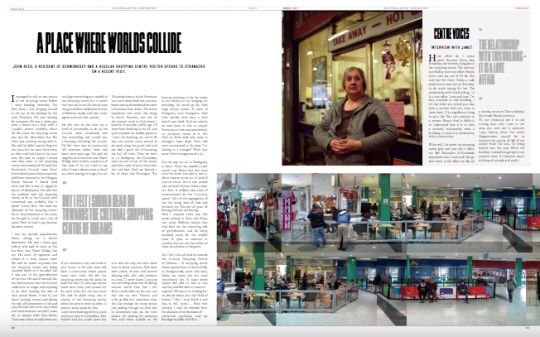
Over the last number of years, I’ve become increasingly interested in creative work that plays a part in creating conversation, stirring debate and influencing societal change. I’m a big believer in developing work that engages with community bodies, and then giving that work back to those same community organisations.
Over the last few days, i’ve tried to do some research specifically within photography as a social practice. I’m drawn to some of the opportunities in this field, such as the chance to be able to meet a wide variety of people, the fact the practice would enable me to work in different spaces, the chance to travel, the flexible nature of the role and most importantly, it would allow my work to be noticed by a variety of people from all cross sections of society.
When conducting my research, I came across the above work by Eva Sajovic. It was on a website based around the archive of research and dialogue around socially engaged photography. Sajovic worked with marginalised communities in London who were affected by the processes of urban regeneration. Through the work, which included photographs and interviews, she created ‘The Elephant’s Trumpet’. This was a collaboratively produced community newspaper that argued with council bodies for a more community-minded proposal. The work brought together local traders, shoppers, neighbours, artists and the wider community and enabled them to mobilise, promote and share ideas about the future of their area. This is just one short example of the type of work i’m interested in.
When researching this practice, it was also important for me to be realistic and accept that with any job, it has its challenges too. Some of these challenges include the fact that job security can be a big issue. Art as a social practice is generally very dependent on funding and therefore if I were to pursue this role, I would have to understand how this works and what are the best ways to approach it. Off the back of this research, I hope to get in touch with the Belfast Archive Project manager and photographer, Frankie Quinn. He depends on photography as part of his social practice. I hope to forward him some questions in regards to what are the best ways to approach funding and what skills are needed in his practice.
0 notes
Text
Communicating in a digital world.

Increasingly digital communication is happening across a variety of platforms. The likes of Google and Bing are examples of digital communication across ‘search and information’,whilst Ebay and Amazon are examples of digital communication across the marketplace. It seems as though this is all part of the emerging digital workplace. Over the next few years more and more people will be expected to communicate through digital methods.
In today’s class Cathy discussed some of the positives and negatives regarding how this relatively new form of communication has had on the workforce. For example:
Provides a faster way to communicate with colleagues - email, instant messaging etc.
Enables and increases collaboration - employees can work with each other with the use of web conferencing and team rooms.
Provides access to vital tools without needing to be in the physical office environment - PC/laptop, remote scanners etc.
There will always be disadvantages as well. Some of these include:
Miscommunication - This can depend on the mood of the sender or receiver. With text, it can be easy to cause offence.
With a reduction in verbal communication and an increase in written text, people with dyslexia may struggle.
How can we adapt?
Be clear, concise and focussed.
Be a good listener
Good written communication skills - letters, emails etc.
Ask the right questions - people want to know that you are interested.
Good teamwork skills - work well with others.
Cathy was telling us that it helps to know what out own communication style is.
Assertive - Most effective, high self-esteem. Know you limits and aren’t pushed beyond those limits.
Aggressive - Your needs are more important than others. Can be hostile or threatening towards others.
Passive Aggressive- Usually feel powerless. Not very reliable and often complain.
Manipulative- Influencing or controlling others for their own benefit.
Submissive - Very strong lack of confidence. Can often feel like their opinion isn’t valued.
What am I?
Off the back of Cathy’s lecture today, it got me thinking about what sort of communicator I am. I would like to be an assertive person, who puts their point across in a way that others understand, however I feel i’m currently submissive. This is partly due to a speech impediment that affects my verbal communication. Often I know exactly what I want to say but when it comes to saying it, the words just don’t come out the way I had planned.
0 notes
Text
Dealing with uncertainty.
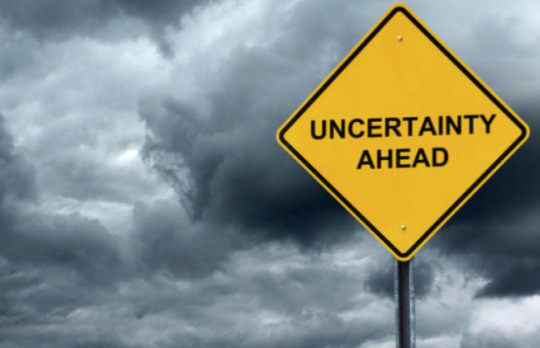
Today was our introduction to Professional Practices. Cathy’s lecture touched on ‘uncertainty’ in a changing world of work. It’s important for me to recognise the seismic shift in regards to how we work, as well as having some idea of what will be expected of me when I graduate.
We began by thinking about the four different industrial revolution blocks, before going on to talk about how we should respond to the situation that we find ourselves in. Today’s society is firmly within the fourth industrial revolution. Many aspects of life are now being digitalised and moved online. New ways of living can bring uncertainty. It’s vital that we are equipped and willing to adapts to the changes that come our way.
Just like the previous three revolutions, the fourth revolution brings about challenges and opportunities.
Challenge
Workers may see their original job tasks changing due to the advent of new technologies. When thinking about an example of this in photography, I thought about the changing face of photojournalism. This genre of photography has become incredibly competitive. The fact that everyone has a smart phone in their pocket has meant that newspapers and magazines have drastically cut down on the amount of press photographers they employ. It takes more time and money to send a cameraman out to an event, when someone off the street could take a photo of the same event on their smartphone and send the image into the agency.
Opportunity
Increased productivity. We are now living in a digital era. Sometimes it feels as if everything is at the tip of our fingers. There’s no doubt about it, the fourth industrial revolution has increased the speed of productivity. With new technologies available, it has meant we can mass produce better quality products. Photography has been transformed throughout this digital era. For example, we now have digital cameras that can operate well with high ISO’s, without producing lots of image noise. No longer are photographers restricted to rolls of film. You can buy SD cards that enable you to take thousands of images.
How to deal with uncertainty?
Social coping strategies - Communication with family/friends.
Physical coping strategies - Eating healthy and exercising.
Emotional coping strategies - When feeling anxious or worried, take a step back and recognise how you’re feeling. This will enable you to see what it is you need to change.
0 notes
